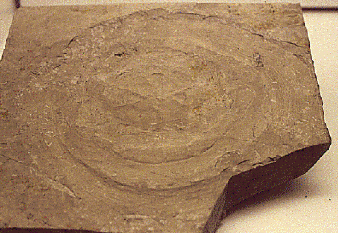|
Scyphozoans are extremely rare as fossils; their soft bodies,
which are composed mostly of water,
can only be preserved under very unusual conditions.
A few possible but poorly known scyphozoans have been described from the
Vendian (Late
Precambrian),
and scattered scyphozoan fossils are known throughout the
Phanerozoic. Shown here, from the
collections of the Senckenberg Museum in Frankfurt, Germany, is a
specimen of Rhizostomites from the Late
Jurassic
Solnhofen
Limestone of Bavaria, Germany, a body of rock
which has yielded many fossils of exceptional preservation.
It is possible, however, that the problematic, pyramid-shaped
conulariids,
which are fossils ranging from the middle Ordovician to the Triassic, are
scyphozoan polyps, or else related to the scyphozoans in some way. This
point is still debated — what do you think?


 |





